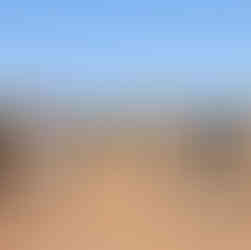Arru pulla anpa
- jshaw047
- Dec 3, 2024
- 2 min read
The Sunday of the Arabana Ngura was time to go on a fieldtrip to see Arabana wadlhu. Nguri-nguri-ai! (so many flies) but it was a great trip! The trip started by visiting some sandhills near the Station homestead where the Rangers had seen tracks of mulgarra, a little carnivorous marsupial, a few weeks earlier. Mulgarras are very rare in Australia, so the Rangers showed us how they put up motion sensor cameras so if the mulgarra is around and walks by at night, a photo will be taken and they'll know it's there - then the Rangers can come back and do things to look after it better. In the sandhills there were spectacular amounts of parkilya (the leaves can be eaten as they contain water) and kunha kutyurku (poached egg daisy) .
After being in the sandhills everyone travelled to Kalpirinha (Davenport Springs). The name means 'to gather water' Kalpirinha was an initiation site in the very olden days. People used to camp near that creek on the eastern side. Kalpirinha is a place where Arabana mob still visit and swim today. The contrast between the surrounding miraka wadlhu (red country) and the ngarrawa (mound springs) was impressive.
From Kalpirinha the group went to Box Swamp, where many pitha (box trees) grow. Thanthi Syd explained Box Swamp used to be a major camping and hunting place for Arabana people, before colonisation and for people living at Finniss Springs - he said there was always kutha in this ikara and you could always get good tyalpa, meat and vegetable food here. But when the Pipeline Road was made for Olympic Dam, the road verge was too high, and stopped the natural flow of water into Box Swamp and the ikara dried out, no more kutha, and the pitha died. Two years ago, the Corporation worked with BHP to fix the road so kutha goes back into Box Swamp but it will take a lot of time for the ikara to recover.
Seeing Box Swamp was ngardliyanta (sad) but overall the fieldtrip was great - wadlhu nhiki ngurku-arlai! (this country is beautiful!).


























Comments